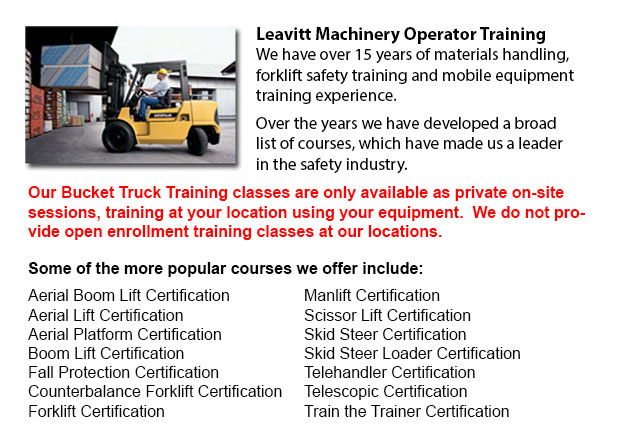
Warehouse Forklift Training Programs Vancouver - Warehouses can either be retail, industrial or commercial facilities, functioning from bulk product retailing to product distribution services. Regardless of the kind of warehouse, staff inside warehouse settings must be well trained in safety procedures related to material handling and storage, conveyor systems, loading docks, and forklifts and pallet jacks. Good housekeeping is important to a safe and orderly warehouse environment.
Truck and loading dock systems are usually located at a height from the ground. Products exit and enter warehouses through these systems where workers load and unload things from ramps and elevated docks. Particular attention should be paid to safety habits throughout this stage. To avoid falls, install yellow striping along the edge of docks and ramps. Pay attention to the area around delivery trucks which are parked at the loading dock, particularly the area between dock and the truck. Be certain that while unloading, truck wheels are chocked.
In order to distribute products in the facility, some warehouses use a conveyor system. These systems are made with moving wheels and belts that may pose a pinch point danger. Keep hair and parts of the body far away from conveyors to prevent injury. Elevated conveyors pose a danger to staff under if safety nets are absent. Staff have to know how to stop conveyors in case of emergency. Be aware of the location of off switches and emergency stop buttons. When servicing conveyors, lock out/tag out measures are mandatory.
Pallet jacks and forklifts are designed to move materials all-around the warehouse. Operators of forklifts are required to take training and be given certification. Operators of pallet jacks do not require certification, but should be trained on the machinery. Training programs instruct operators in the right ways for lifting things and transporting them to their assigned place. Neither pallet jacks nor forklifts must ever be used to transport or lift workers.
To allow for sufficient room for machines and people to pass, rack systems and storage shelving help to create an orderly and efficient work area, specially if they are correctly braced. Slow and careful placement of good is needed to prevent accidents caused by products falling off the facing aisle. Aisles must be kept clear by storing products flat and in the shelving units. Pallets are utilized for stacking products. They must be in good condition, and palleted products must be baled or shrink-wrapped, whenever possible.
PPE or also referred to as personal protective equipment should be worn when required to help protect the employees' heads, limbs, feet and hands. Bump caps or hard hats, gloves and steel-toed shoes are common PPE.
Slippery floors pocked with dents and pits present a hazard. Good housekeeping practices include keeping warehouse floors and docks clear of debris, oil and dirt. The area must be kept clear of boxes, baling supplies and garbage.
-
Telehandler Ticket Vancouver
Telehandler Ticket Vancouver - The telescopic handler or telehandler is a frequently used equipment in agricultural and industrial applications. This equipment is similar in appearance to a forklift and also functions in a similar way, even if teleha... More -
Forklift Operator Certification Vancouver
Forklift Operator Certification Vancouver - Forklift operator certification is usually needed for employees working within industrial, warehouse or construction environments to guarantee the safe operation of forklifts. Workplace training need to fol... More -
Certified Fall Protection Training in Vancouver
There are high numbers of injuries at work linked to falling and a lot of fall-related deaths reported each and every year. The majority of these instances might have been avoided with better training, better measures in place, and by correctly equip... More -
Forklift Training Course Vancouver
Forklift Training Course Vancouver - CSA and OSHA establish criteria for forklift safety training which meets existing standards and regulations. Anyone planning to utilize a forklift is needed to successfully complete safety training prior to using... More -
Overhead Crane Certification Vancouver
Overhead Crane Certification Vancouver - The overhead crane certification course is a program that is designed to assist trainees, even if they have literacy or language restrictions. The course comprises a practical hands-on training session and a c... More -
Forklift Instructor Training Vancouver
Forklift Instructor Training Vancouver - Forklift Instructor training certification is recommended for forklift operators who would like to become instructors. To qualify for forklift instructor training, operators must be able to prove they possess... More -
Crane / Overhead Crane / Truck Mounted Crane / Hydraulic Cranes Training in Vancouver
Overhead cranes are likewise referred to as bridge cranes. They are actually a type of crane which comprises a hook and line apparatus which runs along a horizontal beam which runs along two widely separated rails. Lots of overhead cranes can be foun... More -
Scissor Lift Safety Training Vancouver
Scissor Lift Safety Training Vancouver - A scissor lift is a kind of platform lift that moves vertically. The lift table is moved in a vertical motion because of criss-cross folding supports which are linked in what is referred to as a pantograph. Th... More

Forklift Training Vancouver
TOLL FREE: 1-888-254-6157
24389 Fraser Highway
Langley, British Columbia
forklifttrainingvancouver.com
Email Us
About Us


